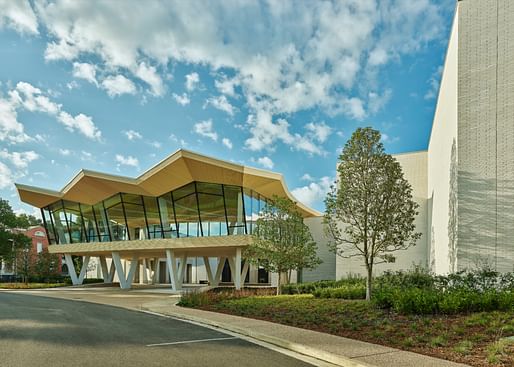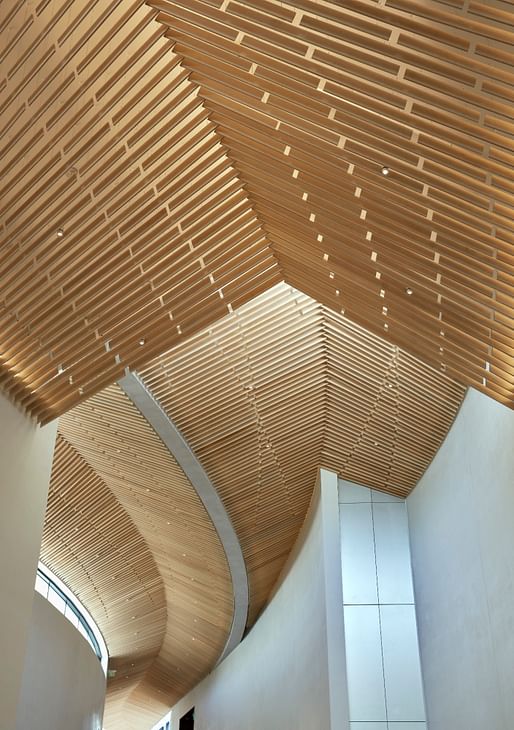
The Arkansas Museum of Fine Arts is nearing completion ahead of a predicted April 2023 opening. Designed by Studio Gang and Polk Stanley Wilcox Architects following their selection for the commission in 2016, the project has seen the unification of several existing structures on the museum grounds under a “blossoming” central addition.

The 133,000-square-foot building includes galleries, an art school, performing art spaces, public gathering spaces, a restaurant, and a museum store. Over 14,000 works of art will be housed in the museum, some dating back to the 14th century.

“Our design strengthens the museum’s role as a cultural anchor for Little Rock by uniting once-disparate structures into a cohesive whole and opening the building to the surrounding city and landscape,” said Jeanne Gang about the scheme. “By optimizing its functional spaces and expanding its galleries, classrooms, and social spaces, the building transforms the visitor experience into one that is intuitive, inspiring, and continuous with its setting in MacArthur Park.”

Externally, the most significant design intervention by Studio Gang is a ‘weaving’ central addition housed under a pleated roof. Underneath the roof, a triple-height atrium forms a “light-filled, connective space” guiding visitors into the museum’s overhauled galleries. The ceiling of the atrium is clad with suspended wood slats arranged in a linear pattern, while a polished concrete floor echoes the flowing roofline through curving bands of stone aggregate.

To the north, the project sees the restoration of a historic 1937 Art Deco façade, while the southern entrance opens onto an 11-acre landscape designed by SCAPE Landscape Architecture. The site plan contains 2,200 linear feet of new walking paths and an anchoring Event Lawn designed to host special events and museum exhibitions.

As an adaptive reuse project, the team has sought to minimize the endeavor’s carbon footprint through exploiting existing building materials. Carbon-intensive elements retained in the overhauled scheme include the original structure and foundations made of concrete and steel as well as masonry, precast concrete, and metal facades. Other sustainable features in the museum include a radiant heating and cooling system in the museum’s floor slabs and a rainwater management system.
The museum is one of several major adaptive reuse projects reaching completion this year. Earlier this week, we reported on a former LA Times print facility reborn as creative offices by EYRC Architects while SOM completed a science complex at Wellesley College which consolidated several existing buildings on the campus.
Earlier in 2022, we gained an insight into Foster + Partners’ adaptive reuse of an old Spanish gas plant, while work progressed on ODA’s transformation of a historic Rotterdam post office in the Netherlands.
No Comments
Block this user
Are you sure you want to block this user and hide all related comments throughout the site?
Archinect
This is your first comment on Archinect. Your comment will be visible once approved.